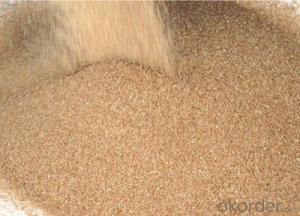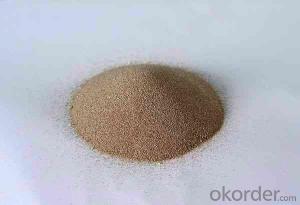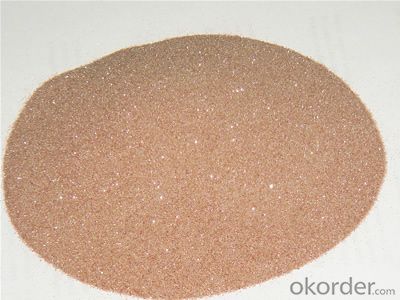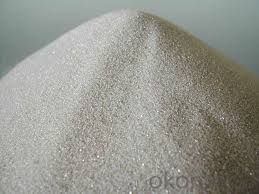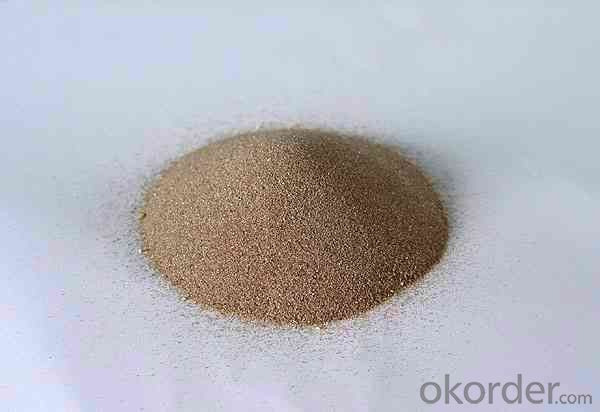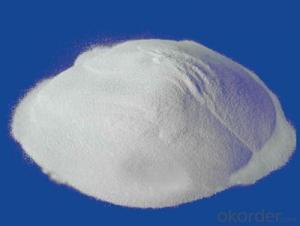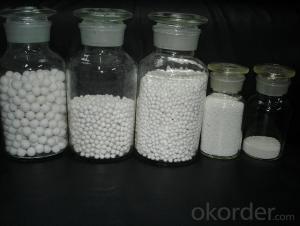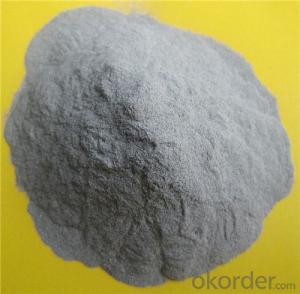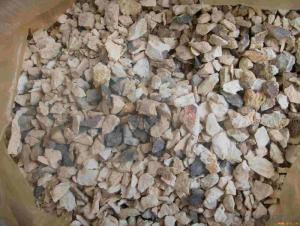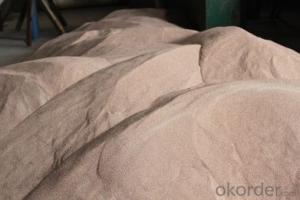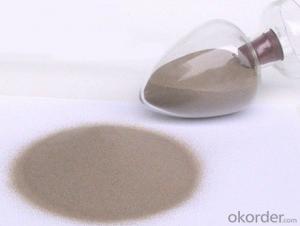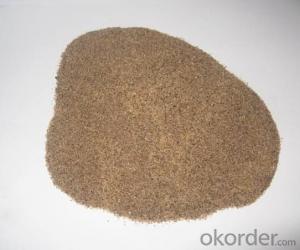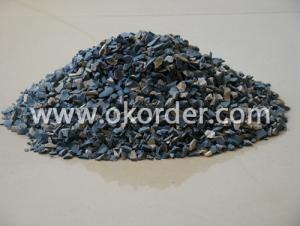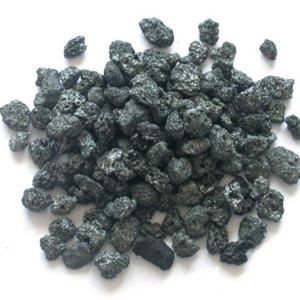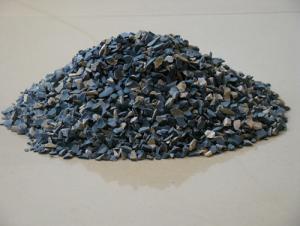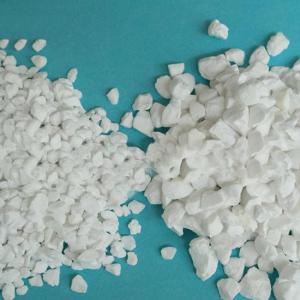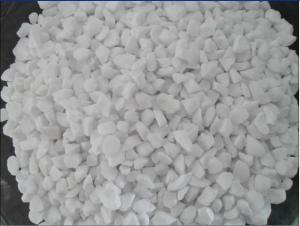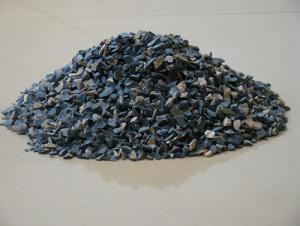Raw Materials for Refractory:High-Quality Zircon Sand and Zircon Flour
- Loading Port:
- Tianjin
- Payment Terms:
- TT OR LC
- Min Order Qty:
- 25 m.t.
- Supply Capability:
- 3000 m.t./month
OKorder Service Pledge
OKorder Financial Service
You Might Also Like
Refractory Material/ Zircon Sand and Zircon Flour Good Quality
1.Structure of Zircon Sand and Zircon Powder
We are offer zircon sand With Below Mention Descriptions: ZrO2 65 - 67 %. We are offer zircon sand With Below Mention Descriptions: ZrO2 65 - 67 %. Zircon is a remarkable mineral, if only for its almost ubiquitous presence in the crust of Earth. It occurs in igneous rocks as primary crystallization products, in metamorphic rocks and in sedimentary rocks as detrital grains.
Further, the mineral due to hardness, durability and chemical inertness, zircon persists in sedimentary deposits and is a common constituent of most sands.
2.Main Features of Zircon Sand and Zircon Powder
1 Tiny, round, solid ball shape provides greater surface area for improved performance and dispersion in its application
2 High refractory rating, lower specific gravity rating, and higher service temperature produces greater yield
3 With lower bulk density, it offers better air permeability for better performance as a result of its overall physical characteristics
4 Lower thermal expansion rate and thermal conductivity produces better results in intense heat environments
5 Standard particle size within each grade is ideal for specific applications
6 Raw material is easily reclaimed multiple times by dry method
7 Physical characteristics produce a lower breakage rate during dry crushing
8 Ceramsite sand is a cost effective, single sand application; no need to mix with other sands
9 Ceramsite Sand is environmentally friendly, reducing pollution and reusing raw materials
3.Main usage of Zircon Sand and Zircon Powder
The zircon sand is mainly used for fireproof materials (commonly called zirconium fireproof materials such as corundum bricks and zirconium fireproof fiber), sand for casting mould in casting industry (precision casting sand) and fine enamelware. In addition, the zircon sand is also used in the production of glass, metal (zirconium sponge) and zirconium compounds (zirconium dioxide, zirconium oxychloride, sodium zirconate, zirconium potassium fluoride, zirconium sulfate, etc.).
4. Zircon Sand and Zircon Powder Images
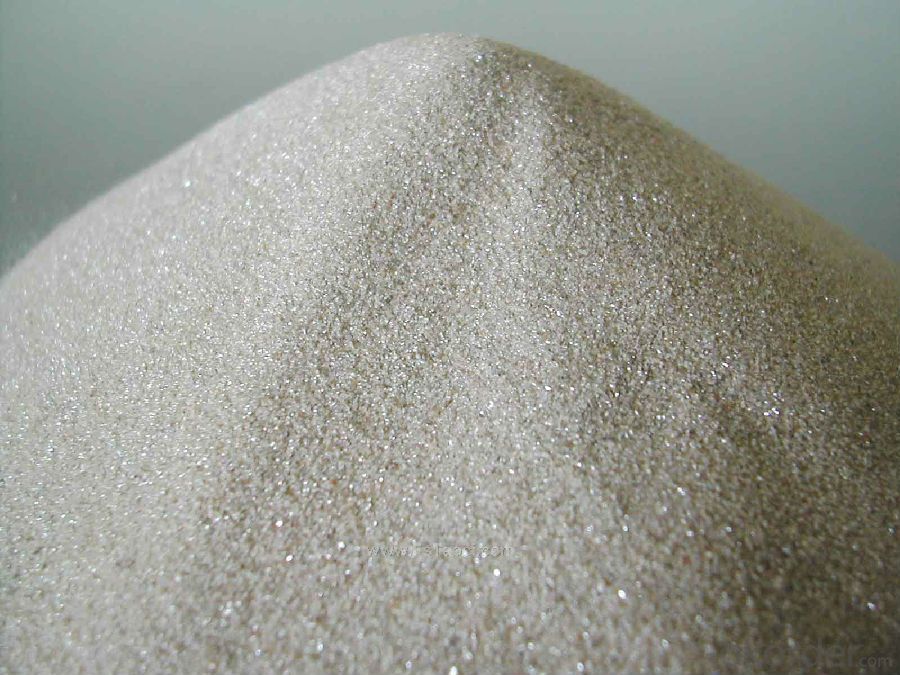


5. Zircon Sand and Zircon Powder Specification
Item | SY8 | SY6 |
Zr Content (ZrO2) | ≥66% | ≥65.5% |
Fe Content (Fe2O3) | ≤0.08% | ≤0.12% |
Ti Content (TiO2) | ≤0.10% | ≤0.10% |
6.FAQ of Zircon Sand and Zircon Powder
1). Q: Are you a factory or trading company?
A: We are a factory.
2). Q: Where is your factory located? How can I visit there?
A: Our factory is located in China. You are warmly welcomed to visit us!
3). Q: How can I get some samples?
A: Please contact me for samples
- Q: What is the principal part of silicious refractory material
- Silicon nitride and aluminite powder as well as dextrin
- Q: Urgent question: could you tell me that the export of refractory materials to Vietnam is to be packed in wooden cases and smoked?
- See which port, if it is from the border (Pingxiang, Dongxing port), will not be needed.
- Q: What are the characteristics of magnesium fireproof plate
- Features: Glass magnesium plate is high temperature resistant, sound absorbing, and capable of preventing water, pests, dampness, corrosion, poison, pollution. Paint can directly be applied to the surface of the plate. Air nails are usable for the plate, to which ceramic tile can also be applied with good pigmentation. The plate is easy to decorate, has high strength, good flexibility when bending, and can be nailed, sawed, glued It can also be made into thermal insulation materials with a variety of compround composite insulation plate. Characteristic: Magnesium plate glass is high temperature resistant, sound absorbing, and capable of preventing water, pests, dampness, corrosion, poison, pollution. Paint can directly be applied to the surface of the plate. Air nails are usable for the plate, to which ceramic tile can also be applied with good pigmentation High strength, flexibility when bending, convenient for decoration. It can be sawed, nailed, and glued.
- Q: How to divide the fire rating standards of insulation materials?
- 1. According to the GB8624-97 national standard, building materials can be divided into following levels in terms of combustion performance. A-level: Non-combustible building materials: Materials almost don't burn. B1-level: Fire-retardant building materials: Fire-retardant materials are good at resisting flame. It is difficult for them to burst into fire when coming across open fire in the air or at high temperature. It will not quickly get wilder and when the fire source removes, it will be extinguished immediately. B2-level: Combustible building materials: Combustible building materials can play a certain role in preventing combustion. It will immediately burst into flames when coming across open fire or at high temperature, and will lead to fire spreading, such as wooden pillars, roof frames and beams as well as stairs. B3-level: Inflammable building materials: Inflammable building materials are highly flammable with no flame retardant ability. The fire risk is high. 2.The exterior wall thermal insulation materials can be classified according to fire rating. 1. Insulation materials with A-level combustion performance: rock wool, glass wool, foam glass, ceramic foam, foam cement, close-celled perlite, etc. 2. The insulation materials with B1-level combustion performance: specially-treated extruded polystyrene boards(XPS)/ specially-treated Polyurethane(PU), Phenolics, Polystyrene rubber powdery particles,etc. 3. Insulation materials with B2-level combustion performance: Expanded polystyrene sheets(EPS), Extruded polystyrene board(XPS), Polyurethane(PU), Polyethylene(PE), etc.
- Q: Using what kind of melting aluminium furnace refractories is more appropriate?
- If it's the ordinary, you can use high aluminum refractory brick with general clay, GB/T 3994-2005 clay heat insulation refractory brick. If you need these with good material, there is high alumina thermal insulation refractory brick, GB/T 3995-2006 high aluminum heat insulation refractory brick, models have A13 and material is the alumina, A13 50 u, high insulating brick B5.Intermediate insulating brick B2, etc. Dolomite brick: good hang kiln performance, good erosion resistance, but brick is usually without f - CaO, hydration, and difficult to transport and storage, less used in the production. Magnesia-chrome bricks: good hang kiln, used in calcining zone. The disadvantage is that its thermal shock resistance is poor and plus hexavalent Cr is toxic, the production and use of magnesite chrome bricks in international countries gradually reduce. Now unit using the brick find replacements as soon as possible.
- Q: How to choose refractory material
- The crystalline refractory fiber mainly consists of polycrystalline mullite fiber, the optimum use temperature is 1300 DEG C, and the long-term use temperature of polycrystalline alumina fiber is 1400 DEG C. The service temperature of ordinary refractory fiber is 1150 degrees, and the use temperature of advanced refractory fibers (such as alumina, zirconia, refractory fiber) can reach 1700 degrees centigrade
- Q: Ask some questions about refractories
- Application: it is suitable for blast furnace tapping system.
- Q: What are the chemical composition of refractory cement?
- Calcium aluminate prepared by calcining as the main component. Aluminate cement takes bauxite and limestone as raw materials, alumina content of about 50% as the clinker. And it is a hydraulic cementing material made by grinding. Refractory cement is also known as aluminate cement.
- Q: Are the rubber insulation materials are refractory materials?
- No
- Q: Which basic refractory is better?
- Zhengzhou Xindeyuan Refractories Co., Ltd.and Zhengzhou Rongsheng Kiln Refractories cO.,Ltd. Their basic refractories mainly refer to refractories with magnesium oxide and calcium oxide as main components what can resist errosion of basic slag, including magnesia bricks, magnesia-alumina bricks, magnesia-chrome bricks, dolomite?bricka and so on(magnesia bricks), among which magnesia bricks is the most common. Magnesia brick containing more than 80% to 85% magnesium oxide, has good resistance to basic slag and iron slag, and higher refractoriness than clay and silica brick. It is mainly used for open-hearth?furnace, oxygen-blown converter, electric furnace, ferrous metal smelting equipment and other high temperature equipments.
Send your message to us
Raw Materials for Refractory:High-Quality Zircon Sand and Zircon Flour
- Loading Port:
- Tianjin
- Payment Terms:
- TT OR LC
- Min Order Qty:
- 25 m.t.
- Supply Capability:
- 3000 m.t./month
OKorder Service Pledge
OKorder Financial Service
Similar products
Hot products
Hot Searches
Related keywords



